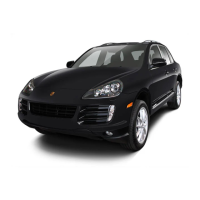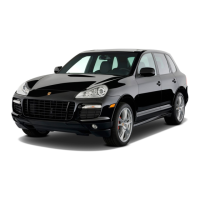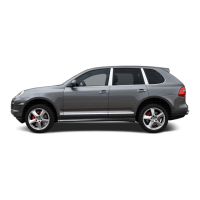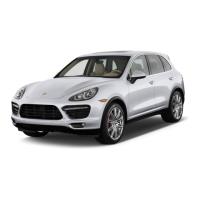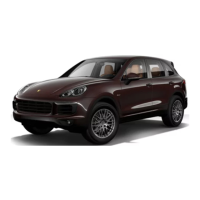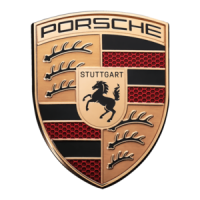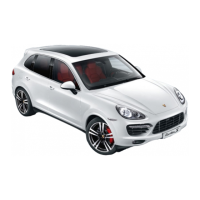Chassis
Page 4.11
Control Unit
As in previous models, the control unit is located above the mounting
saddle for the foot operated parking brake in the driver’s footwell. The
control unit analyses the incoming data from the antenna and forwards
the relevant information to the instrument cluster. Since the data is
transmitted via cable from the central antenna, the control unit is
designed to pick up both frequencies (433 RoW/315 MHz
USA/Canada). If a new control unit is installed, it must be coded accord-
ingly.
Input signals via CAN
• Vehicle speed
• Outside temperature
• Engine speed
Input signals via LIN (Local Interconnect Network)
• Four wheel electronics units via the digital central antenna
Output signals
• Front left trigger
• Front right trigger
• Rear right trigger
• Rear left trigger
• Instrument cluster
Triggers (trigger senders)
The four triggers, which are located under the wheel housing liners in
each of the four wheel housings, send a 125 kHz signal directly to the
wheel electronics units in order to transmit the desired information to a
central antenna immediately.
When the vehicle is unlocked, the control unit initiates the first 125 kHz
signal for each trigger in the four wheel housings one after the other,
starting at the left front in clockwise direction. Then, the wheel elec-
tronics units are only triggered approx. every 60 seconds while the
vehicle is moving. Since the range of the trigger coils is limited to the
relevant wheel housing, any possibility of interference affecting other
wheels is almost totally eliminated. Depending on many and varied influ-
ences from the immediate environment, such as reflections (wet roads,
metal grates, guide rails, etc.), external interference (external transmit-
ters), a trigger signal can fail to reach the related wheel sensor or the
feedback data protocol can get lost on its way to the central antenna.
The control unit responds immediately by re-triggering the trigger -
repeatedly if necessary at the wheel position at which the expected
protocol had failed to materialize as soon as the initiated trigger cycle
from front left to rear right is completed. This concept reduces system
interference and the wheel electronics units are detected much faster.
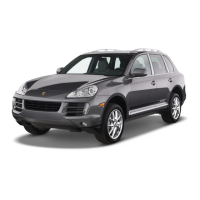
